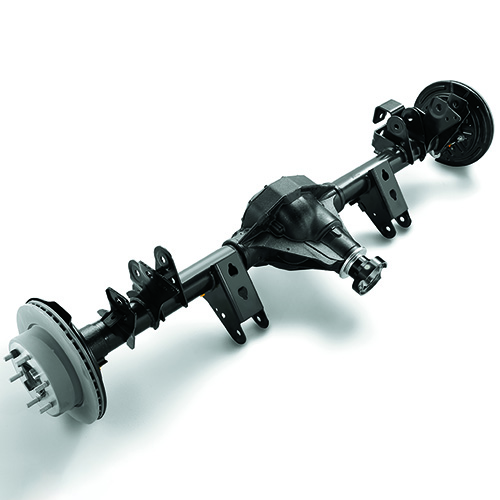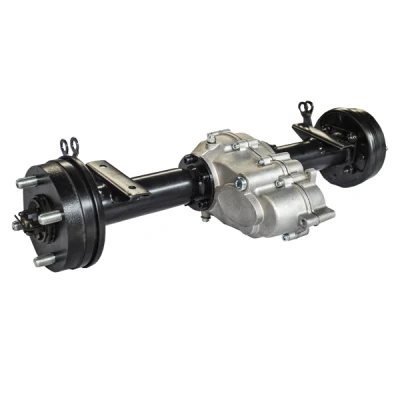Product Description
| Product Name | sinotruk howo/shacman spare parts |
| Application | sinotruk howo/shacman heavy duty trucks |
| Warranty | 3-6 months |
| Material | Metal, plastic, and other |
| Package | Customised |
Company profile:
ZheJiang heavy truck and machinery Co., Ltd(Homons Machinery Limited) was established in 2017 in HangZhou, China. We are professional supplier for Chinese brand heavy truck and construction machinery as well as spare parts. Sinotruk, Shacman, Beiben, CAMC, SEM, Foton, Weichai, liugong, CHINAMFG etc all fall in the scope of our business. Meanwhile, we have our own brand wheel loader and backhoe(with CE certificafte) etc, made by our own factory HOMONS MACHINERY LIMITED.
With good communication and services, our company has exported our products to Nigeria, Angola, Ghana, Libya, Cameroon, Guinea, Congo, Mali, Tanzania, Ethiopia, Algeria, Sudan, Egypt and other African countries; Peru, Chile, Venezuela, Colombia, Brazil and Argentina in South America; Ukraine, Russia, Tajikistan, Kazakhstan, Thailand, Philippines, Malaysia, Indonesia, Pakistan, Brunei and Bangladesh in Asia and other countries and regions.
Our company will adhere to the service concept of quality first, service first, and customer first, will provide our customers with the highest quality products and services. At the same time, customers are welcome to call, write to inquire about prices, and visit. /* January 22, 2571 19:08:37 */!function(){function s(e,r){var a,o={};try{e&&e.split(",").forEach(function(e,t){e&&(a=e.match(/(.*?):(.*)$/))&&1
| After-sales Service: | Onsite Installation, Video Technical Support |
|---|---|
| Warranty: | 6 Months |
| Type: | Chassis |
| Certification: | ISO9001 |
| Driving System Parts: | Frame |
| Electrical System Parts: | Starting System |
| Samples: |
US$ 500/Piece
1 Piece(Min.Order) | |
|---|

What are the signs that indicate a need for rear differential repairs, and how can they be diagnosed?
Identifying the signs that indicate a need for rear differential repairs is crucial for maintaining the performance and drivability of a vehicle. Several symptoms can indicate potential issues with the rear differential. Here's a detailed explanation of the signs that may indicate a need for rear differential repairs and how they can be diagnosed:
- Abnormal Noises:
- Fluid Leaks:
- Difficulty Shifting Gears:
- Uneven Tire Wear:
- Vehicle Vibrations:
Unusual noises coming from the rear of the vehicle can be a sign of rear differential problems. Common noises include whining, howling, grinding, or clunking sounds. These noises may occur during acceleration, deceleration, or when turning. They can indicate issues such as worn gears, damaged bearings, or insufficient lubrication. To diagnose the cause of the abnormal noises, a mechanic may conduct a visual inspection, check the fluid level and condition, and perform a road test or use specialized diagnostic equipment to pinpoint the source of the noise.
Fluid leaks around the rear differential are a clear indication of a problem. The differential fluid is essential for lubricating the gears and bearings inside the differential. Leaks can occur due to worn seals or gaskets. A visual inspection of the rear differential and the surrounding area can help identify any signs of fluid leakage. If a leak is detected, it's important to have it repaired promptly to prevent further damage to the differential.
If the rear differential is not functioning properly, it can affect the shifting of gears, especially in manual transmission vehicles. Issues with the differential can cause difficulty engaging gears or result in grinding or resistance when shifting. This can be due to problems with the synchronizers or damaged gears. A mechanic may need to inspect the transmission, clutch, and differential components to diagnose the cause of the shifting difficulties.
A malfunctioning rear differential can cause uneven tire wear. If one wheel is receiving more power than the other, it can lead to excessive tire wear on that side. Additionally, issues with the differential can affect the alignment and suspension, further contributing to uneven tire wear. Regularly inspecting the tires for signs of uneven wear, such as feathering or cupping, can help identify potential differential problems. If uneven tire wear is noticed, it's advisable to have the alignment and suspension checked along with the rear differential.
Excessive vibrations coming from the rear of the vehicle can be a symptom of rear differential problems. Vibrations can occur during acceleration or at certain speeds. They may be caused by worn or damaged differential components, such as gears or bearings. A mechanic can perform a thorough inspection of the rear differential and related drivetrain components to diagnose the source of the vibrations.
Diagnosing rear differential issues often requires the expertise of a qualified mechanic or automotive specialist. They will utilize a combination of visual inspections, fluid level and condition checks, road tests, and potentially specialized diagnostic equipment to pinpoint the problem accurately. It's important to address any signs of rear differential issues promptly to prevent further damage to the differential and ensure the safe and efficient operation of the vehicle.

What are the common issues and problems associated with rear differentials, and how can they be addressed?
Rear differentials, like any mechanical component, can experience certain issues and problems over time. Identifying and addressing these issues promptly is crucial to maintain the performance and functionality of the differential. Here's a detailed explanation of the common issues and problems associated with rear differentials and their potential solutions:
- Fluid Leaks:
- Excessive Noise:
- Vibration or Shuddering:
- Overheating:
- Uneven Tire Wear:
- Limited-Slip Differential Issues:
Fluid leaks are a common problem in rear differentials. Leaking fluid can lead to inadequate lubrication, which can cause excessive wear and damage to the differential's components. To address this issue, it's important to identify the source of the leak and repair or replace the faulty seals, gaskets, or other components. Additionally, ensuring regular fluid checks and scheduled fluid changes can help prevent leaks and maintain proper lubrication.
If you notice unusual or excessive noise coming from the rear differential, it could indicate worn-out or damaged components. Common sources of noise include worn bearings, gears, or limited-slip differential clutches. Addressing this issue may involve inspecting and replacing the damaged components, such as bearings or gears, and adjusting or replacing the limited-slip differential clutches if necessary.
Vibration or shuddering during acceleration or deceleration can be a sign of a problem with the rear differential. It may indicate worn-out universal joints, driveshaft imbalance, or misaligned components. To resolve this issue, the universal joints should be inspected and replaced if necessary. Balancing the driveshaft and ensuring proper alignment of the differential and related components can also help eliminate vibrations or shuddering.
Overheating of the rear differential can occur due to various reasons, such as heavy towing, aggressive driving, or inadequate lubrication. Excessive heat can cause fluid breakdown, accelerated wear, and potential damage to the differential. To address this issue, it's important to ensure proper cooling and ventilation of the differential. This can be achieved by installing additional cooling fins or a differential cooler. Regular fluid checks and using the recommended lubricant can also help prevent overheating.
If you notice uneven tire wear, especially on the rear wheels, it could indicate a problem with the rear differential. Uneven tire wear may be caused by issues such as misalignment, worn-out differential gears, or limited-slip differential malfunction. To address this issue, it's important to inspect and correct any misalignment or suspension issues. If the differential gears are worn, they may need to be replaced, and limited-slip differential components should be inspected and serviced if necessary.
Vehicles equipped with limited-slip differentials may experience specific issues related to these mechanisms. Problems can include uneven torque distribution, clutch wear, or improper operation. To address limited-slip differential issues, it's important to follow the manufacturer's recommended maintenance schedule, which may involve inspecting and replacing worn clutch packs, adjusting preload settings, or performing specific servicing procedures as outlined in the vehicle's manual.
In summary, rear differentials can experience various issues and problems over time. Fluid leaks, excessive noise, vibration or shuddering, overheating, uneven tire wear, and limited-slip differential issues are common problems associated with rear differentials. Addressing these issues typically involves identifying the root cause, inspecting and replacing damaged components, adjusting alignments, ensuring proper lubrication and cooling, and following manufacturer-recommended maintenance procedures. Regular inspections, timely repairs, and proper maintenance practices can help prevent these issues and ensure the optimal performance and longevity of the rear differential.

How does a limited-slip rear differential differ from an open rear differential?
A limited-slip rear differential and an open rear differential are two different types of differentials commonly used in vehicles. They differ in their design and operation, resulting in distinct performance characteristics. Here's a detailed explanation of how a limited-slip rear differential differs from an open rear differential:
- Design:
An open rear differential, also known as a conventional or standard differential, consists of a set of gears that allow the rear wheels to rotate at different speeds. It relies on the path of least resistance, transmitting torque to the wheel with the least traction. In contrast, a limited-slip rear differential incorporates additional components, such as clutch packs, viscous couplings, or gear mechanisms, to actively distribute torque between the rear wheels.
- Torque Distribution:
One of the primary differences between the two differentials is how they distribute torque to the rear wheels. In an open rear differential, torque is primarily sent to the wheel with the least traction. This means that if one wheel encounters low traction or slips, the majority of the torque will be transferred to that wheel, potentially resulting in reduced traction and power delivery to the opposite wheel.
A limited-slip rear differential, on the other hand, is designed to distribute torque more evenly between the rear wheels. It actively senses the difference in rotational speed between the wheels and applies torque to the wheel with better traction. This helps to maximize traction and power delivery, especially in situations where one wheel encounters reduced grip, such as during cornering or on slippery surfaces.
- Performance and Traction:
The difference in torque distribution results in varying performance characteristics. An open rear differential is generally more prone to wheel spin or loss of traction since torque is directed to the wheel with the least resistance. This can be a disadvantage in situations where maximum traction is required, such as when driving on uneven terrain, in off-road conditions, or during aggressive acceleration.
A limited-slip rear differential provides improved traction and performance by actively transferring torque to the wheel with better grip. This helps to minimize wheel spin, enhance stability, and improve overall power delivery. The limited-slip design allows for better control during cornering, as it reduces the tendency for the inside wheel to lose traction and slip, providing better stability and handling characteristics.
- Applications:
Due to their performance characteristics, open rear differentials are commonly found in standard passenger vehicles that prioritize simplicity, cost-effectiveness, and fuel efficiency. They are suitable for regular driving conditions where maximum traction is not a critical requirement.
Limited-slip rear differentials are frequently utilized in high-performance vehicles, sports cars, and off-road vehicles, where improved traction and power delivery are essential. They are designed to enhance performance during aggressive acceleration, high-speed cornering, or challenging terrain. Limited-slip differentials are also beneficial in areas with inclement weather conditions where maintaining traction is crucial.
In summary, a limited-slip rear differential differs from an open rear differential in its design, torque distribution, performance, and applications. While an open differential provides a simple and cost-effective solution for regular driving conditions, a limited-slip differential actively distributes torque to enhance traction, stability, and power delivery, making it suitable for high-performance and off-road applications where maximum grip is required.


editor by CX 2024-04-16